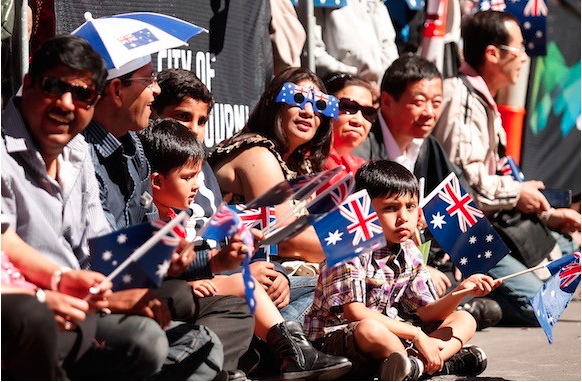HILDA reveals no real change in gender roles

Australian attitudes to gender roles are becoming more progressive, but these views are not translating into real change in the home and workplace, according to the latest release of the Household, Income and Labour Dynamics in Australia (HILDA) Survey.
HILDA, Australia’s only nationally representative long-term household study, finds that women still do the lion’s share of housework and care – they spend 13 hours more than men each week doing unpaid work, while men spend 11 hours more on paid employment.
This traditional gendered divide becomes more apparent when children enter the picture, with women’s share of the couple’s time spent on paid employment dropping to only 14 per cent right after birth. This share sits at around 23 per cent in the five years after the first child is born, and reaches just 30 per cent ten years after the birth.
Melbourne Institute of Applied Economic and Social Research academic Inga Lass – the report’s co-author – said this is despite Australians becoming less traditional in our views of gender roles.
“We found men and women are increasingly disagreeing with statements about traditional gender arrangements of parenting and work,” Dr Lass said.
“Women in de facto relationships were the least likely to be in favour of traditional gender arrangements, while married men were the most likely to be in favour of such arrangements.
“There is also a significant discrepancy between the way women and men envision a fair share of work. HILDA shows most women feel overburdened by household chores, while most men think they do their fair share.”
Melbourne Institute Deputy Director and report co-author Roger Wilkins said continuing gender inequality in the home is reflected in the workplace.
Professor Wilkins said the gender pay gap has only narrowed slightly, despite more women entering full-time work.
He said women are also becoming more educated: the number of women who hold post-school qualifications has increased 25.7 percentage points, and in 2016 more women than men held a university degree.
“Despite much public discussion about improving the lot of women in Australia, on many measures there has been relatively little progress this century,” Professor Wilkins said.
The HILDA survey tells the stories of the same group of Australians over the course of their lives. Starting in 2001, the survey now tracks more than 17 500 people in 9500 households and will continue to grow as families expand.
This year’s report highlights the plight of renters. It shows more Australians are renting, except for people aged 15-24, who are remaining in the parental home longer.
“Renters, especially younger ones, are finding it more difficult to own a home. Over the survey period the number of renters aged between 18 to 24 transitioning into home ownership dropped from 13.5 per cent to 7.6 per cent,” Professor Wilkins said.
“Private renters are also considerably more at risk of financial stress, especially compared with outright home-owners, who, unsurprisingly, are the least at risk.”
The report also questions widespread commentary about the rise of the gig economy. It shows rates of self-employment have been in marked decline over the life of the survey.
“The self-employed are also more likely to fail than succeed. For example, among those starting their own business between 2001 and 2006, only 50 per cent were still in business a year later,” Professor Wilkins said.
The survey also found:
- There is a clear gender divide in financial literacy: in response to a series of financial literacy questions, 49.9 per cent of males answered all five questions correctly, compared with 35.4 per cent of females.
- People aged 65 and over face the highest level of income inequality within their own age group, compared with other age cohorts.
- Underemployment has become a rising feature of the Australian labour market. Yet, for most workers it is short-lived: 68 per cent of the underemployed leave this state within one year and almost all (98 per cent) are not underemployed anymore after five years. Some obtain their desired employment hours, but for a considerable share of workers, they adapt their desired number of working hours or leave employment altogether.
- Job quality for part-time and casual workers is, on average, lower than for full-time workers and workers on permanent contracts.
- Despite reports of rising prices, average household expenditure on electricity and gas has been declining in real terms since 2014.
- The share of income spent on child care is rising; this is most acutely felt among low-income households.
The HILDA Survey is funded by the Australian Government’s Department of Social Services.